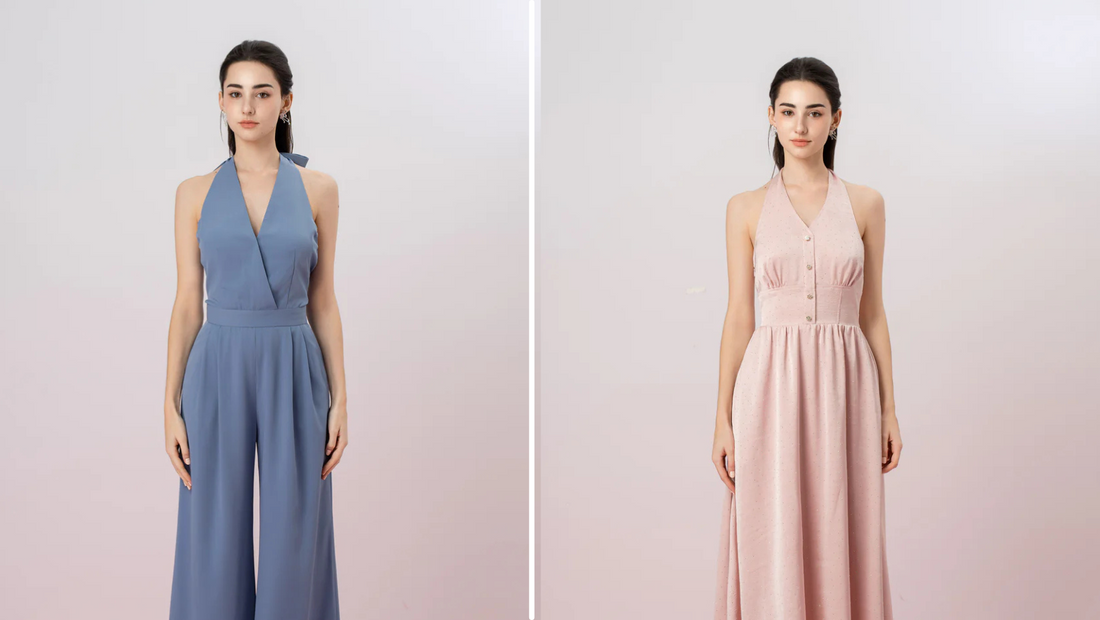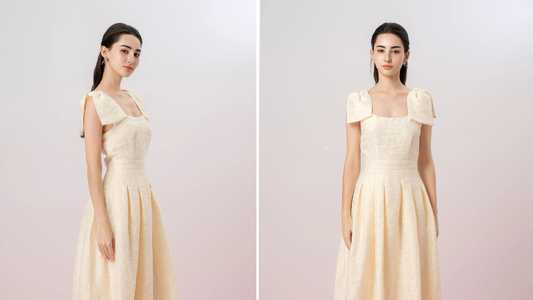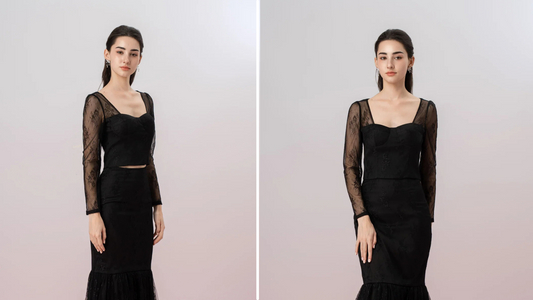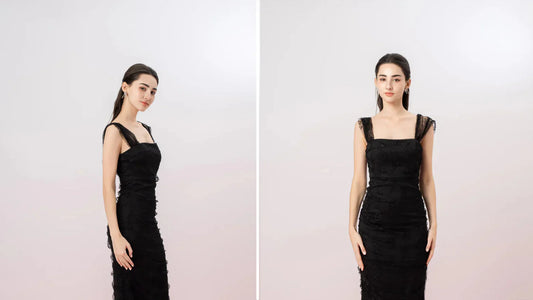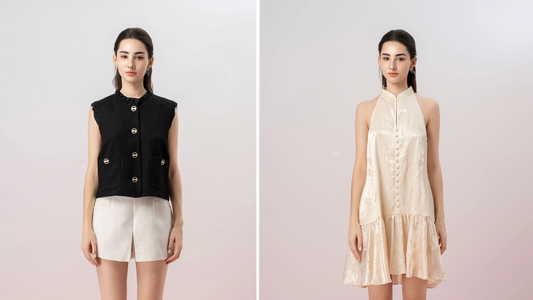Luxury fashion. It has long been associated with opulence, exclusivity, and desire — but in the face of increasing environmental awareness, many are now questioning: Is luxury fashion sustainable? The glimmer of a well-crafted designer piece, the promise of unparalleled craftsmanship, often comes at a price. A price not just measured in dollars, but in environmental impact. You’re drawn to luxury; the allure of perfectly tailored suits, timeless dresses, and rare accessories that speak to your taste. But with climate change growing as a global concern, can you reconcile your love for luxury with the increasing need for sustainability?
Here lies the dilemma: on one hand, you seek to invest in high-quality garments that speak to your status and style; on the other, the world is changing, and you wonder if your choices are contributing to its destruction. This tension exists for many consumers in Singapore, where eco-consciousness is on the rise, and fashion often feels like an area where personal values are at odds with indulgence. But what if the world of luxury fashion could be sustainable? And what if, by choosing the right brand, you could enjoy high-end fashion while being mindful of the world you inhabit?
The good news: luxury fashion is evolving. The question, “Is luxury fashion sustainable?” is no longer a distant concern. Brands like Nimisski are leading the way in eco-conscious luxury by blending timeless style with sustainable practices. At Nimisski, we believe that luxury and sustainability can coexist — that the fabrics that touch your skin should not only feel exquisite but also reflect the changing world we inhabit.

The Intersection of Luxury and Sustainability
When you think of luxury fashion, you might envision vast manufacturing processes, leather, silk, and the opulence of high-end materials. But what’s not often seen is the hidden cost of producing these items — often harmful to the environment. The high price tag of luxury fashion sometimes hides the ecological footprint left behind by mass production, resource-intensive textiles, and wasteful design cycles.
But the landscape is shifting. Many luxury brands are rethinking their impact and asking themselves tough questions: How can we continue to offer exceptional quality while reducing our environmental footprint? How can we stay relevant in a world where ethical considerations increasingly shape consumer behavior? It’s a delicate balance, but sustainable luxury is becoming a growing trend, with designers increasingly choosing to integrate eco-friendly practices without compromising on the essence of luxury itself.
For a consumer like you, making the switch to eco-conscious luxury means more than just buying something that’s labeled “sustainable.” It’s about a shift in mindset: to look for brands that offer exceptional quality while also preserving the planet. At Nimisski, we understand the desire for exclusive, high-end fashion, but we also know that your purchase decisions need to align with your values. This is why we offer sustainable designer pieces that speak to your desire for both style and responsibility.
The Environmental Impact of Luxury Fashion
Luxury fashion, by nature, can be resource-intensive. From exotic leathers to silk that requires the careful farming of silkworms, high-end fashion often demands more than what can be extracted from the earth. This raises an important question: How do we reconcile our need for beauty with the need to protect the planet?
- Resource Use: Traditional luxury fashion relies heavily on natural materials that take a toll on the environment. For instance, the leather industry is notorious for its high water usage, toxic dyes, and the extensive land used for cattle farming. Silk production, while beautiful, often involves intensive land use and requires the use of chemicals to process.
- Waste: Fashion as a whole is one of the world’s largest polluters, with clothing waste contributing to mountains of discarded textiles in landfills. Luxury fashion, with its seasonal collections and high turnover, also contributes to this cycle, despite its reputation for timelessness.
- Carbon Footprint: The production and transportation of luxury fashion, particularly when sourced from around the world, leaves a significant carbon footprint. From shipping raw materials to final products, the energy required to produce these pieces adds up. Additionally, the global nature of luxury supply chains often increases the environmental toll.
However, there’s hope. Luxury brands are now pushing the boundaries of sustainability. Materials are being reimagined, with the rise of vegan leathers, sustainable cotton, and recycled materials. Even luxury brands with established reputations are beginning to shift their practices, designing with longevity and sustainability in mind.

How Sustainable Luxury Fashion Works
Understanding how luxury fashion can be sustainable is key to making an informed decision. Sustainability in fashion isn’t just about choosing the right materials — it’s about changing the entire lifecycle of the garment. From design to production, here’s what sets sustainable luxury apart:
- Material Choices: Sustainable luxury brands are moving away from resource-heavy materials in favor of eco-friendly alternatives. Organic cotton, recycled polyester, bamboo fabrics, and plant-based alternatives to leather are becoming more common. These fabrics require fewer resources to produce and leave less environmental impact. For example, Nimisski selects sustainable fabrics that are not only high-quality but also environmentally responsible, ensuring that your investment is both luxurious and ethical.
- Slow Fashion, Timeless Design: One of the hallmarks of sustainable luxury fashion is the focus on timeless design and quality over fast, trend-driven collections. In this sense, sustainable luxury aligns with the ethos of slow fashion: pieces are meant to last for years, not seasons. These garments are carefully crafted to stand the test of time, reducing the need for frequent replacements and promoting longevity.
- Ethical Production: Sustainable luxury fashion is not just about materials — it’s about how those materials are used. Brands that emphasize ethical practices ensure fair wages, safe working conditions, and minimal waste in their production processes. At Nimisski, we focus on ethical production and responsible sourcing, ensuring that each piece is made with care for both people and the planet.
- Transparency: Sustainability means being open about practices. Brands that are truly committed to sustainability will share information about their supply chains, production methods, and materials sourcing. Nimisski provides full transparency to customers, so you know exactly where your clothes are coming from and how they were made.

Contact : +65 8787 9226
Opening hours :
Mon - Sun
11am - 9pm
Nimisski’s Commitment to Sustainable Luxury Fashion
At Nimisski, we believe that luxury and sustainability go hand in hand. Our commitment to sustainable fashion is more than just a trend — it’s a philosophy woven into every garment we create. We focus on three core pillars to deliver luxury that’s both ethical and exquisite:
- Sustainable Materials: We source high-quality fabrics that minimize environmental harm, from organic cotton to recycled fabrics that retain the luxurious feel you expect from high-end fashion.
- Timeless Design: Every piece we design is created with longevity in mind. Our clothing isn’t just for one season; it’s an investment. Timeless silhouettes and durable craftsmanship mean that our garments are made to last, both in terms of style and quality.
- Ethical Manufacturing: We are committed to fair labor practices, low-impact production methods, and responsible sourcing. Every step of our production process is designed with respect for both people and the planet.

Choosing Sustainable Luxury Fashion in Singapore
For a discerning consumer in Singapore, selecting sustainable luxury requires more than just choosing a high-end brand. It’s about understanding the impact of your purchase and making a choice that aligns with your values. The rise of eco-conscious consumerism in Singapore means that luxury brands must rise to the occasion, offering solutions that make it easy for you to be both stylish and ethical.
Look for brands that emphasize transparency and eco-friendly materials. Avoid fast fashion luxury labels that focus on trends over longevity. Instead, consider making a statement with your wardrobe by choosing pieces that align with a more sustainable future.
At Nimisski, we empower our customers to make ethical fashion choices without compromising on the luxury experience they desire. By focusing on sustainable luxury fashion, you’re not just investing in style — you’re investing in a future where fashion and the planet thrive together.
Are You Ready to Make the Shift?
As the demand for sustainability in fashion grows, the shift toward eco-conscious luxury fashion is no longer optional. The future of fashion is green, and it’s here to stay. Are you ready to invest in garments that not only reflect your style but also your values? With Nimisski, you don’t have to choose between luxury and sustainability.

